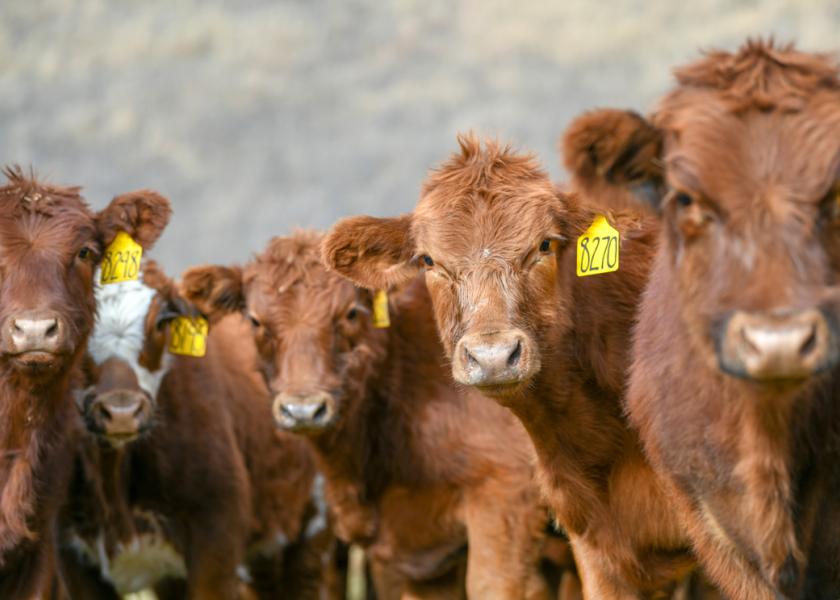Feed Prices Favor Limit-Feeding Stockers a High Energy Diet

For cattle producers that are set up to feed calves in a bunk, limit-feeding a high energy diet may be a cost-effective option for growing calves this fall and winter.
While limit-feeding is not a new concept, current forage prices relative to grain/co-products may make it an attractive alternative to feeding high roughage growing diets. For instance, hay priced at $200/ton with a total digestible nutrients (TDN) value of 52% equates to approximately $0.22 per pound of TDN. However, $4.80/bu corn (88% TDN) and wet distillers grains priced at $75/ton (108% TDN) each come out to about $0.11 per pound of TDN.
Research at Kansas State University has looked at limit-feeding calves a high energy diet at 2.2% of body weight compared to a full-fed high roughage diet (2.8% of body weight) for a 90 day backgrounding period. Both diets included 40% wet corn gluten feed (dry matter basis) and varying amounts of corn, alfalfa, prairie hay and a supplement.
Stockers limit fed the high energy diet were more efficient and gained 2.5 lb/d whereas stockers full-fed the high-roughage diet gained 2.9 lb/d. Backgrounding system had little to no effect on finishing performance or carcass characteristics.
Advantages of Limit Fed, High Energy Diets
There are several advantages to a limit feeding approach for growing calves:
- Reduced mixing time and loads of feed due to less forage in the diet.
- Less feed falling out of bunks and being wasted, reducing rodent issues.
- More efficient use of bunk space. If time, labor, and pen design allow, consider leveraging the amount of bunk space in a pen by feeding one group of calves in the morning and then rotating in a second group in the evening.
- Improved health management of calves. Healthy calves will be eager to approach the bunk at feeding time, making lethargic, sick calves easier to spot.
- Improved pen conditions and maintenance due to less manure. Research from Kansas State University has shown a 40-45% reduction in manure output when limit feeding stockers. That is huge!
Tips for Limit-Feeding Stockers
When getting calves started on feed, place long stemmed hay in bunks prior to calves arriving. For the first day’s feed delivery of the limit-fed diet, start calves at an intake of approximately 0.75% of body weight (dry matter basis) and work up to 2.2% of body weight within about 14 days.
As calves grow, be sure to adjust the amount of feed delivered so that target gains can be maintained. Feeding at a consistent time each day and providing adequate bunk space (at least 15 inches per head) can help prevent digestive upsets and set calves up for success.
Read More:
Could BRD Cases Decline In High-Risk Cattle With Delayed Vaccination?
Capture Data at Weaning
Effective Fenceline Weaning for Calves: Stress Reduction and Benefits







